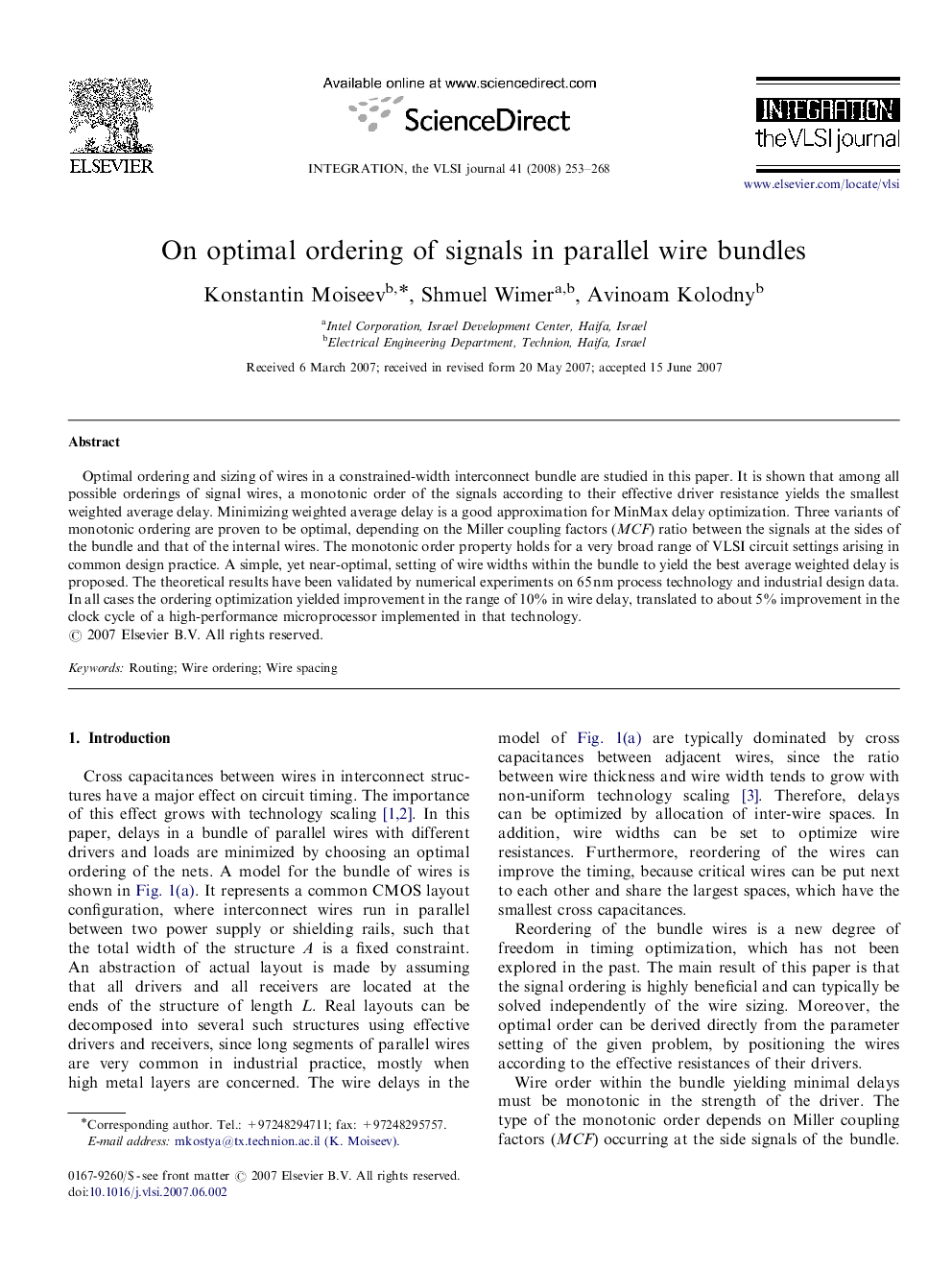| Article ID | Journal | Published Year | Pages | File Type |
|---|---|---|---|---|
| 540298 | Integration, the VLSI Journal | 2008 | 16 Pages |
Optimal ordering and sizing of wires in a constrained-width interconnect bundle are studied in this paper. It is shown that among all possible orderings of signal wires, a monotonic order of the signals according to their effective driver resistance yields the smallest weighted average delay. Minimizing weighted average delay is a good approximation for MinMax delay optimization. Three variants of monotonic ordering are proven to be optimal, depending on the Miller coupling factors (MCF) ratio between the signals at the sides of the bundle and that of the internal wires. The monotonic order property holds for a very broad range of VLSI circuit settings arising in common design practice. A simple, yet near-optimal, setting of wire widths within the bundle to yield the best average weighted delay is proposed. The theoretical results have been validated by numerical experiments on 65 nm process technology and industrial design data. In all cases the ordering optimization yielded improvement in the range of 10% in wire delay, translated to about 5% improvement in the clock cycle of a high-performance microprocessor implemented in that technology.
